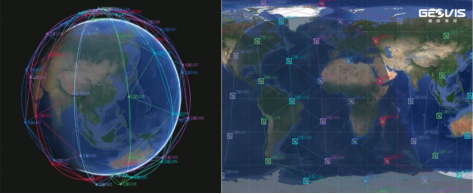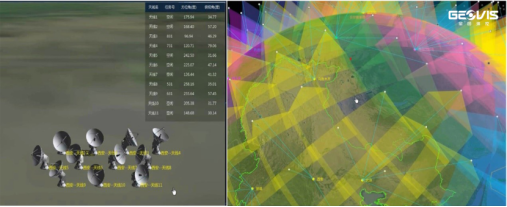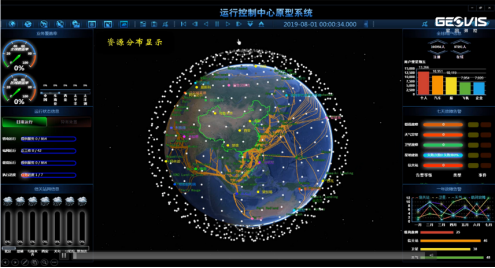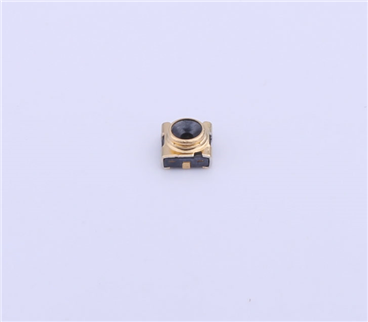Service hotline
+86 0755-83975897
Release date:2024-06-12Author source:KinghelmViews:2134
As technology advances rapidly and human exploration of the universe continues to progress, space missions are becoming increasingly complex and diverse. In this context, innovations in communication technology are particularly crucial. In recent years, Internet constellation communication has emerged as a cutting-edge technology, providing robust communication support for space missions. This has significantly enhanced the efficiency of data transmission between spacecraft and the ground, improved the precision of command and control, and boosted collaborative capabilities.
Basic Principles of Internet Constellation Technology
An Internet satellite constellation refers to a group of communication satellites operating in specific orbits, interconnected through radio, laser, and other means to form a global satellite communication network. This network enables global Internet access and data transmission via inter-satellite links and ground terminals. Comprised of numerous small satellites, these constellations offer wide coverage, high communication capacity, and low latency, achieving seamless global coverage.
The communication constellation system is mainly composed of three parts: the space segment, the ground segment, and the user segment.

▲Diagram Illustrating the Composition of the Space Segment, Ground Segment, and User Segment of a Communication Constellation
The space segment primarily refers to the communication constellation composed of multiple communication satellites. This segment is responsible for providing data transmission, signal relay, and routing functions. To achieve wide-area high-speed data transmission capabilities, Internet constellations typically employ a combination of high orbit and low orbit satellites. High orbit satellites support long-distance and wide coverage communication but at slower speeds, while low orbit satellites offer faster transmission speeds and lower latency but with smaller coverage areas. Through the design of the Internet constellation configuration, the complementary capabilities of both types of satellites are harnessed to form an efficient and stable global communication network.

▲Observer Space Information Analysis Basic Platform—Simulation Analysis of Communication Constellation Space Segment
The ground segment primarily consists of the Operations Control Center and gateway stations. The Operations Control Center is responsible for the overall management and scheduling of the satellite constellation, including satellite orbit control, inter-satellite link management, data transmission monitoring, and the management and scheduling of gateway stations. The gateway stations handle the conversion and transmission of signals between the ground segment and the space segment satellites, facilitating communication between the ground and satellites as well as effective control of target satellites. Internet constellations typically establish multiple gateway stations globally to form a ground communication network, ensuring high-quality communication coverage worldwide.

▲Aerospace Simulation System Project—Simulation of the Ground Segment of the Communication Constellation
The user segment primarily refers to various terminal devices in the satellite internet constellation, which achieve communication connections with the space segment and ground segment by receiving and transmitting signals, providing users with high-speed, stable internet access services. Satellite internet communication terminals include handheld devices such as satellite phones and portable communication terminals, mobile terminals like vehicle-mounted and airborne communication equipment. In space missions, satellite internet terminals mainly refer to onboard microwave communication terminals and onboard laser communication terminals, which can provide real-time data transmission and monitoring services for spacecraft.
Satellite Internet Constellation Communication
Support Applications in Space Missions
As an emerging communication method, satellite internet constellations offer robust communication support for space missions with their global coverage, high-speed transmission, and flexible configuration. To meet communication support needs, various spacecraft must be equipped with satellite communication terminals, remote command receivers, and emergency communication terminals. These terminals are characterized by miniaturization, lightweight design, high reliability, and compatibility. For specific communication methods, constellations like StarLink use a hybrid approach, utilizing laser inter-satellite links and onboard routing to rapidly establish communication paths in the space segment. This directly connects services and users, while ground gateways and user terminals primarily use microwave frequencies such as Ku/Ka bands for effective ground coverage, and V-band for enhanced signal strength and targeted services. For spacecraft and satellites in space missions, laser communication can also be employed to leverage the real-time communication capabilities of the satellite internet constellation.
1. Real-Time Data Transmission and Monitoring
Space missions require extensive real-time data transmission and monitoring, including spacecraft status data and scientific experiment data. Satellite internet constellations can provide these missions with high-speed, stable data transmission channels, enabling real-time data transfer and monitoring. For example, a Mars rover conducting scientific experiments on the Martian surface can use the high-speed, stable data transmission services provided by the satellite internet constellation to send large volumes of experimental data back to the ground control center in real time, providing researchers with valuable experimental data and research findings.
2. Command and Control Collaboration
Space missions often require multiple spacecraft to work together to accomplish complex mission objectives. Satellite internet constellations can provide an efficient platform for command, control, and collaboration among spacecraft. Through inter-satellite links and ground terminals, the ground control center can execute precise command and control operations on the spacecraft, facilitating coordination among multiple spacecraft. For instance, during space station construction missions, ground personnel can use the satellite internet constellation to simultaneously send commands to multiple spacecraft, executing precise control and operations while receiving real-time status data from the spacecraft. This coordination enables the assembly and deployment of the space station.
Compared to traditional communication satellites, satellite internet constellations offer significant advantages in terms of low latency, high coverage, and scalability. For example, the current communication delay between the Chinese space station and the ground has been reduced to less than one second. Starlink has reported network latency test results of approximately 20-40ms. It is foreseeable that as satellite internet constellation communication support technologies are further integrated into space station construction tasks, the transmission delay of control commands will be further shortened, significantly improving communication efficiency.
3. Emergency Communication Support
Emergency communication support is crucial in space missions. Satellite internet constellations can provide fast and reliable emergency communication support for space missions. In the event of unexpected incidents or emergencies where ground communication facilities might be damaged or affected, satellite internet constellations can serve as a backup communication method to provide timely communication support. For instance, during satellite launch missions, if ground communication facilities fail, the satellite internet constellation can facilitate emergency communication with the spacecraft, ensuring the mission proceeds smoothly.
4. On-Orbit Maintenance and Upgrades
Currently, spacecraft development is moving towards greater autonomy and intelligence. During their on-orbit operation, spacecraft may require upgrades and iterations of onboard algorithm modules. Satellite internet constellations can support these upgrades and maintenance activities. Leveraging the global coverage and continuous communication capability of satellite internet constellations, ground personnel can send upgrade packages and maintenance commands to the spacecraft, significantly enhancing the efficiency and reliability of space missions.
StarMap Measurement and Control Satellite Internet Constellation Communication Support
Simulation Technology Services
With years of industry experience, StarMap Measurement and Control has mastered core technologies in fields such as orbital dynamics, attitude dynamics, telemetry data fusion, and target characteristic analysis, integrating them with new-generation information technologies like big data and artificial intelligence. The company has developed the "Digital Space" series of software and hardware products, with the Space Insighter as the core product, guided by aerospace business directions, leading to the creation of the Space Link, Space OS, Space SDA, Space Sim, and Space XR product series.
The Earth-Moon Space Orbit Mission Simulation System, based on the company's core product Space Insighter, is supported by a high-precision algorithm library and a massive target database. It constructs a simulation system supporting satellite internet constellation communication, rapidly setting up simulation scenarios for constellation deployment and configuration maintenance, inter-satellite link operation management, and space-based resource coordinated distribution. It comprehensively considers factors such as collision warning and configuration maintenance of the constellation and interruptions in satellite-to-ground and inter-satellite communications. It breaks through key technologies such as constellation orbit control and phase acquisition strategies, inter-satellite network topology routing slot algorithms, and multi-link coordinated distribution among satellites and ground stations. This system achieves high-precision simulation of large-scale satellite internet constellations and gateway satellite-ground-inter-satellite communication transmissions. The engineering application verification of satellite internet constellation communication support simulation technology has been completed in projects, providing a series of customized development services tailored to different user needs.

▲Space Simulation System Project - Giant Constellation Ground Operations and Control Management System
Disclaimer: This article is excerpted from Star Chart Measurement and Control. The views expressed herein are solely those of the author and do not represent the perspectives of Kinghelm or the industry. This content is solely intended for reproduction and sharing, in support of intellectual property rights. When reproducing, please indicate the original source and author. If there is any infringement, please contact us for removal.










Copyright © Shenzhen Kinghelm Electronics Co., Ltd. all rights reservedYue ICP Bei No. 17113853